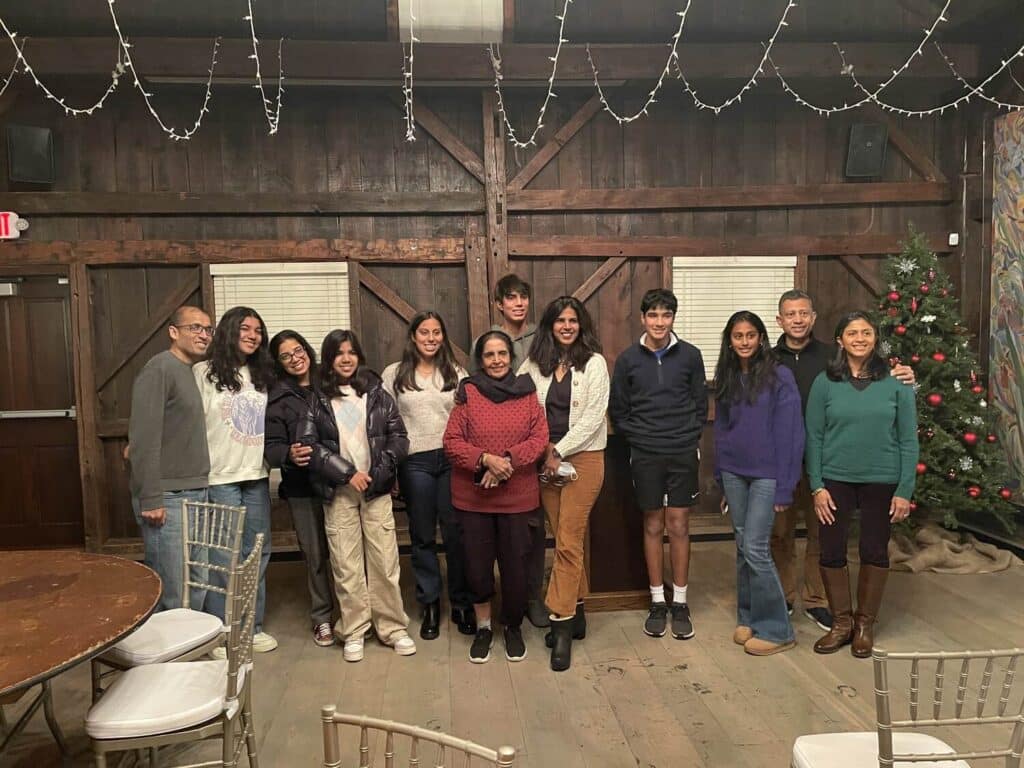By Robert Merchant | Greenwich Time | Feb. 4, 2023
GREENWICH — History can be made by vast technological shifts, charismatic leaders and odd quirks of fate, but history can also be made by parents trying to provide a brighter future for their children.
“My grandparents lived in India, and they made a lot of sacrifices to be sure my father would have a better life in America,” said Mihir Shah, a sophomore at Greenwich High School
Shah was among a dozen students of South Asian heritage from the region — including Greenwich, Stamford and Norwalk, as well as Rye and Harrison in New York — who have been looking at the ways global history has intertwined with their own lives. The students have carried out an extensive oral history project, interviewing family members, and collecting special items and objects.
All of this personal history will be on display at the Greenwich Historical Society as part of the upcoming exhibit, “My Story, Our Future.” The exhibit, which opens to the public Feb. 13, is a collaboration between the historical society, the Indian Culture Center of Greenwich and Stamford and a professor of Asian-American studies at the University of Connecticut.
The goal of the exhibit is to tell individual stories that form a larger mosaic of history, stretching from India to the East Coast of the United States, said Maggie Dimock, curator of exhibitions and collections at the historical society.

“They mapped their family journey, how they ended up here,” Dimock said.
In an email, Shah said his grandfather earned a master’s degree in civil engineering at Villanova University in the Philadelphia area and planned on returning to India afterwards to pursue his career and raise a family there.
A building boom in Western India would have ensured a prosperous life there, but it would not have given his children as many opportunities as they would have had in America, the Greenwich High School student continued. His grandfather decided to stay in the U.S., and he changed careers and pursued a career in textiles.
“Based on the example my grandfather set, my father, who was only an infant when the family moved to America, studied very hard to get into a good school. I learned a lot more from the oral history interviews about how he decided to become an emergency room doctor,” he said. “It’s very cool to be part of this project, which will be archived so that others can learn from it.”
The students, in upper middle school and high school, trained with professor Jason Oliver Chang at UConn on how to conduct an oral history.
The Asian American Studies Institute at UConn will develop a curriculum for students in the state to learn more about Asian-American history beginning in 2025, and organizers of the Greenwich exhibit said the oral history project could be a good a pilot program for others like it.
“We taught rigorous methodologies of oral histories, and how they’re done,” said Chang, who is working on implementing the K-12 curriculum with assistance from a number of cultural groups around the state. “And we helped build up their knowledge base, and their confidence in approaching theses questions with their families.”

Chang said there was something about oral histories carried out among family members that created powerful learning moments for everyone.
“The magic happens every time,” he said. “The story-telling within families — it creates new connections. And the students said it was satisfying to know a deeper history of their family.”
The young people also got a better understanding of the history of India, including the partition of Pakistan, religious divisions and the history of colonization there.
The Greenwich Historical Society provided space and support for the project. Dimock said she hoped the students had learned something about collective memory, museums and how history is passed down from generation to generation.
“They’ve had an opportunity to feel empowered, and help shape the curriculum,” she said. “That’s big, in and of itself. And they will also see themselves represented in a museum. It’s visibility. And this is a local history story. It’s about our community.”
The students have been working twice a month through the fall on Sundays, almost a full course-load, “a fair amount of work,” Dimock said.
Chang said the oral history project based in Greenwich, and others like it, will help foster a better understanding of Asian-Americans, correcting what he called “misperceptions” and “political and cultural invisibility.”
“These efforts to include Asian Americans as real Americans, it’s a project that benefits everyone,” Chang said. “When we know more about our community, we can tell a richer story of what it means to be a resident of Connecticut, what it means to be an American. And these are stories that will lay the foundation for the next generation.”
The exhibit will be in the lobby of Greenwich Historical Society, and it will be free to visit. It will run through Feb. 26 at the historical campus at 47 Strickland Road in Cos Cob.


